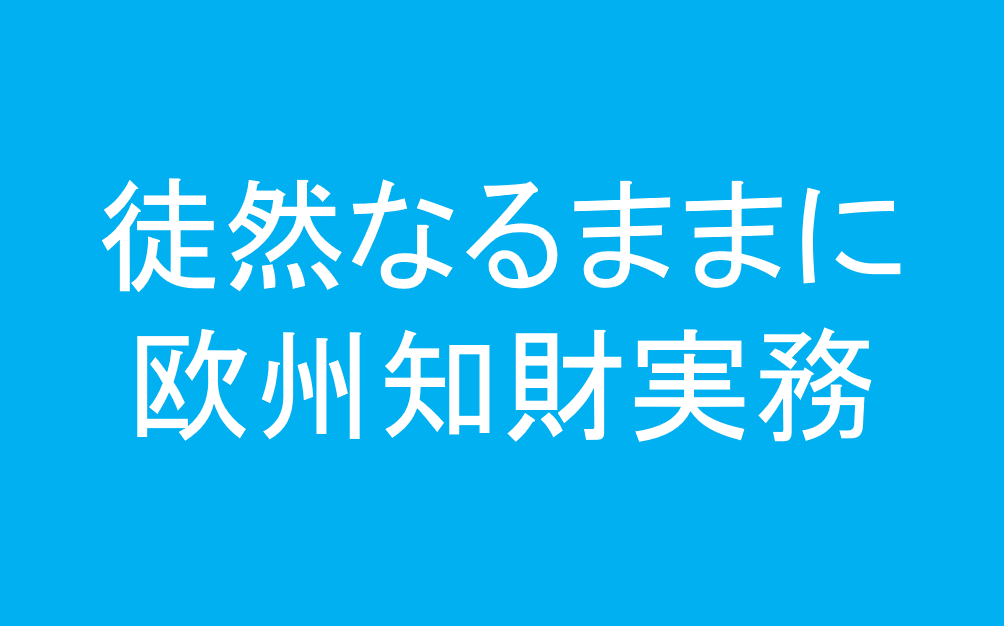以前の記事「拡大審判部の審決G2/21の解説」で説明したように拡大審判部の審決G2/21のHeadnote IIにより「技術常識を念頭に置いて、当初の出願に基づき、当業者が技術的教示に包含され、同一の当初開示された発明によって具体化されるものとして効果を導き出せる場合(if the skilled person, having the common general knowledge in mind, and based on the application as originally filed, would derive said effect as being encompassed by the technical teaching and embodied by the same originally disclosed invention)」特許権者または出願人はその効果をサポートするpost published evidenceに依拠することができるとされました。
しかしながらこのG2/21のHeadnote IIで定められた基準は拡大審判部自身も認めているように極めて抽象的で、具体的に何を意味するのかが明らかではありません。
このためG2/21で拡大審判部に質問を付託した審判部(事件番号:T116/18)による当該G2/21で定められた基準の解釈が待たれていました。
そしてこの度、付託審判部による2023年6月14日付けの予備的見解が公開されました。
付託審判部の予備的見解によると当該G2/21で定められた基準は以下の2通りに解釈できるとのことです。
4.1 According to a first possible interpretation, the answers of G 2/21 could be understood as follows: post published evidence cannot be disregarded solely on the ground that it was not published before the filing date of the patent and was filed after that date (answer to question 1). However, the effect which this evidence addresses cannot be relied upon in the formulation of a technical problem if it was not plausible/credible or implausible in view of the application as filed supplemented by the common general knowledge (answers to questions 2 and 3). In other words, it may be argued that the Enlarged Board has endorsed at least the ab initio plausibility and ab initio implausibility lines of case law by formulating the same criterion for both lines and stating that this criterion would have led to the same result as (im-) plausibility considerations in the respective cases (G 2/21, points 71, 72, 93 and 94 of the reasons). Therefore, a first possible interpretation appears to be that a patent proprietor can rely upon a technical effect and that post published evidence filed as proof thereof, in the present case D21 (and D23) can be taken into account provided that the effect is credible/plausible/not implausible for the skilled person having regard to the application as filed and the common general knowledge.
4.2 A second possible interpretation may be that a patent proprietor can rely upon a technical effect and that post-published evidence filed as proof thereof can be taken into account provided that this effect is derivable from the application as filed and (thus) does not change the nature of the claimed invention.
This would be the criterion that has been applied in decisions which focused only on whether the effect was disclosed in the application as filed, irrespective of whether the effect was plausible/not implausible/credible at the filing date (T 440/91 (point 4.1 of the Reasons), T 851/11 (point 4.2.2 of the Reasons), T 1422/12 (catchword and point 2.3.2 of the Reasons), T 235/13 (point 2.6 of the Reasons), T 31/18 (point 2.5.2 of the Reasons)). Therefore, under this approach, it would be neither necessary nor relevant to ask whether the effect relied upon was plausible/not implausible/credible to the skilled person at the filing date. Contrary to the above, this approach would mean that the case law on plausibility would no longer be applicable. This would be true for both standards identified by the board (type I and type II) in the referring decision (points 13.4 and 13.5 of T 116/18).和訳:
4.1 第一の可能な解釈によれば、G 2/21の回答は次のように理解される。Post-Published Evidenceは、特許出願日前に公開されておらず、その日以降に出願されたという理由だけで無視することはできない(質問1に対する回答)。しかし、この証拠が扱う効果は、技術常識によって補足された出願時の出願内容に照らして、plausible/credibleでないまたはimplausibleな場合には、技術的問題の定式化において依拠することはできない(質問2および3への回答)。換言すれば、拡大審判部は、少なくともab initio plausibilityおよびab initio implausibilityの系列の判例を1つの基準にまとめ、ab initio plausibilityおよびab initio implausibilityの系列が同じ結果をもたらすとの考えに基づきab initio plausibilityおよびab initio implausibilityの系列を支持したと言える(G 2/21、理由の71、72、93、94)。したがってこの第一の解釈によれば、特許権者は技術的効果の証拠として提出されたPost-Published Evidence(本件ではD21およびD23)は、その効果が出願時の出願内容および技術常識を考慮した当業者にとってplausible/credibleであるまたはimplausibleでない場合には考慮されうると考えられる。
4.2 第二の可能な解釈によれば、特許権者は技術的効果の証拠として提出されたPost-Published Evidenceは、その効果が出願時の出願内容から導き出せ、(したがって)発明の性質を変えない限り、考慮することができる。これは、出願日において効果がplausibleであるかまたはimplausibleでないかとは関係なく、効果が出願時の出願に開示されていたかどうかにのみ焦点を当てる基準である(T 440/91(理由 4. 1)、T 851/11(理由4.2.2)、T 1422/12(理由2.3.2)、T 235/13(理由2.6)、T 31/18(理由2.5.2))。したがって、このアプローチでは 依拠した効果が出願日の当業者にとってplausibleであるかまたはimplausibleでないかを問うことは必要でも重要でもない。上述の第一の解釈とは異なり、このアプローチでは、plausiblityを採用する判例がもはや適用されないことになる。これは、審判部が決定で特定した両方の基準(タイプIとタイプII)に当てはまるだろう(T 116/18 の理由13.4 および 13.5 )。
要約するとab initio plausibilityおよびab initio implausibilityをまとめたのが第一の解釈そしてno plausibilityが第二の解釈です(ab initio plausibility、ab initio implausibility、no plausibilityって何?と言う方は以前の記事「Ab initio plausibility、Ab initio implausibilityおよびNo plausibilityの定義」をご参照ください。)。
私個人的には付託審判部がまだno plausibilityの解釈が可能であるという見解であることに驚きました。
付託審判部での最終的な決定は2023年7月28日に予定されている口頭審理で言い渡されます。引き続きクライアントの利益になる決定が得られるように全力を尽くします。



コメント